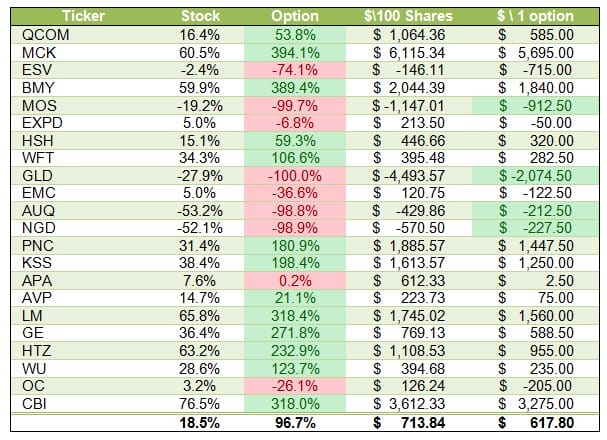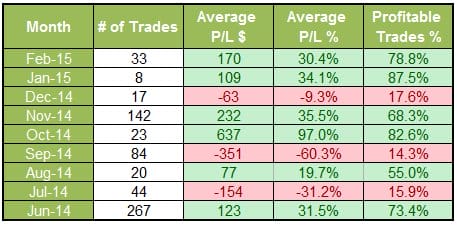Buying Options
| Importance: | Medium | |
| Execution: | Easy |
Buying options is the easiest and most common option strategy. It’s usually used as a leverage position of the underlying, but can also be used to hedge risk. Long options strategies have limited risk and unlimited profit (usually) but suffer from a low probability of profit – usually, the sellers have a higher probability of success. This is why it is important to trade with an edge.
I usually buy options and trade them on the long side in 2 distinct ways:
-
Long term – buying leaps and long-term options as stock replacements – usually leveraging the limited risk – unlimited reward and trying to get more than 100% on the option price.
-
Short term – I’m looking for trades where the break-even point is lower than the average volatility. I’m hoping for a quick jump above the break-even point and close it shortly after entering.
Buying options as stock replacements for the long term:
-
I trade long call if:
-
The stock price is high
-
high buyback yield
-
-
I trade married put (buying the stock + protective put)
-
High dividend yield
-
-
I prefer In The Money options – usually, 10-20% ITM because the break-even point is lower.
-
Trade when implied volatility rank is low.
-
Only trade if you expect a large move in the stock.
-
It’s important to understand the leverage risk – I never commit all the capital to long calls as one bad year can destroy the account.
-
We have back-tested and gave an example of buying Barron’s roundtable recommendations and results. Check them out here.

Short-term volatility play:
-
Implied volatility is low.
-
A month to expiration – I won’t hold the trade for a month but we need some time for expiration to get the full effect of volatility rise.
-
The trend is your friend – Only trade with stock trend AND market trend
-
The Break-even point is much lower than the average daily volatility (so there can be a random move, and we’ll see profit).
-
Max loss no larger than 5-10% when compared with a stock position.
-
We backtested trades where the break-even point was 3 times lower than the average volatility. Read more here.

Use Option Samurai to help you:
You can use Option Samurai to help you, for example, you can use the predefined screens to help you find volatile stocks for short-term or long-term options ideas: See our Options screener here.

- Read the GDX trade example.
- Read the updated IBM trade we’ve done.


